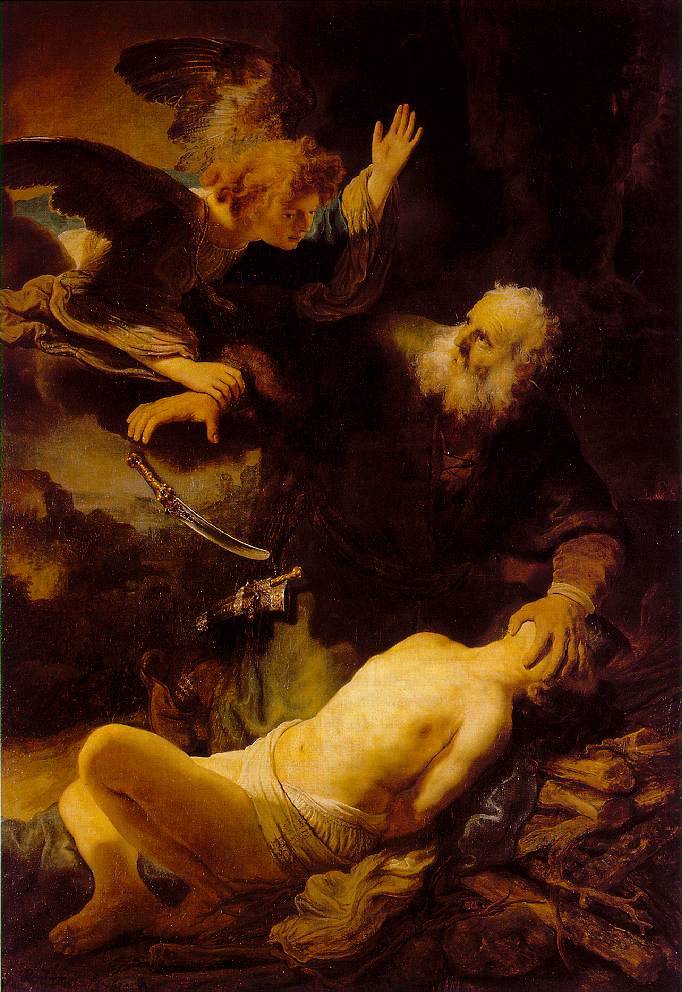Three Cornelias: Navigating Loss With the Bible & RembrandtSample

The Sacrifice of Isaac (1635)

InThe Sacrifice of Isaac Rembrandt seems to capture the moments where everything seems hold its breath. Abraham's left hand holds Isaac's face away—an act of both violence and mercy, as if shielding his son from the terror of what’s about to happen. Abraham's right hand is in the powerful grip of a delicate angel, his face is contorted in bewilderment, and the knife he was holding just a moment ago is now falling through midair.
Rembrandt painted this in 1635. He was still in the early years of success, still rising in fame and fortune. He had not yet buried his wife. He had not yet wept over the graves of three of his children. He had not yet been blacklisted, bankrupted, or buried in an unmarked grave.
And yet, even then, he understood something about the tension between surrender and love. About what it costs to trust God.
God tested Abraham and said to him, ‘Abraham!’
And he said, ‘Here I am.’
He said, ‘Take your son, your only son Isaac, whom you love,
and go to the land of Moriah, and offer him there as a burnt offering
on one of the mountains of which I shall tell you.’” (Genesis 22:1–2 ESV)
There are few words more crushing than these. We often read this story knowing how it ends. But Abraham didn’t. He walked those three days with Isaac, carrying only wood and faith, faith that somehow, God would provide—even when nothing made sense.
“On the third day Abraham lifted up his eyes and saw the place from afar.” (v. 4 ESV)
Maybe you’ve been on a journey like that. Maybe God has called you to surrender something—someone—you love deeply. A relationship. A future. A dream. And maybe, like Abraham, you’ve walked that path not knowing how it ends. Maybe you’re still walking it.
Rembrandt’s painting captures the very moment God intervenes. An angel breaks through the tension, grabbing Abraham’s wrist, and we’re reminded that God is not distant from our pain. He enters it. He stops the knife and provides the ram.
It’s worth noticing that God never wanted Isaac's death—He wanted Abraham’s heart. The test was never about sacrifice for the sake of suffering. It was about trust. Would Abraham trust God even when obedience looked like loss?
What Rembrandt so powerfully communicates is this tension between surrender and mercy, between obedience and intervention. In Abraham’s grief-stricken face, we see a man who was willing to let go, not because he understood, but because he believed in the One who called him.
“So Abraham called the name of that place, ‘The Lord will provide’;
as it is said to this day, ‘On the mount of the Lord it shall be provided.’” (v. 14 ESV)
Is there something God is asking you to surrender—something you’re gripping tightly out of fear or love? What would it look like to trust that the Lord will provide, even when the outcome is unclear?
Scripture
About this Plan

This devotional reading plan invites you to walk through the depths of grief and hope alongside the biblical story and the hauntingly honest art of Rembrandt. Through the lens of his personal losses—including two daughters (both named Cornelia) and a son (unnamed) who died in infancy, and the complicated joy of a third daughter Cornelia, who survived into adulthood—we explore how faith, scripture, and creativity can speak into our sorrow. Let Rembrandt’s journey and the truth of God’s Word guide you through lament, healing, and the quiet strength of enduring love.
More
We would like to thank Eric Targe for providing this plan. For more information, please visit: https://www.lovelifeliturgy.com
Related Plans

Break Free for Good: Beyond Quick Fixes to Real Freedom (Part 3)

Who Is Jesus?

BibleProject | Redemption in the Biblical Story

Grieving With Purpose: A Journey Through Loss
From Dugouts to Destiny: Trusting God in Every Season

Testimonies of Pastors' Kids

Two-Year Chronological Bible Reading Plan (First Year-January)

Into the Clouds (Bible App for Kids)

Jesus Is Our "Light of the World"
